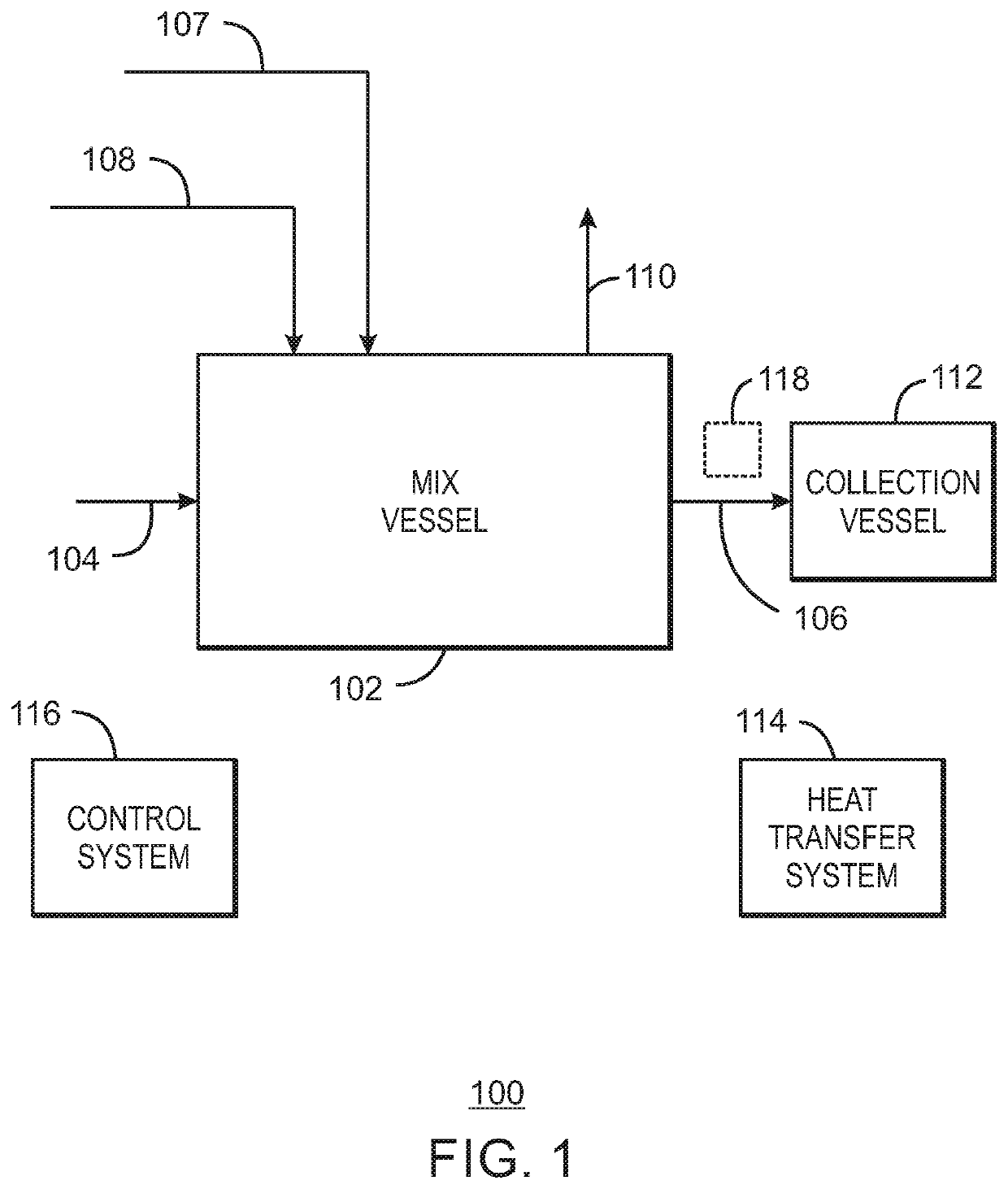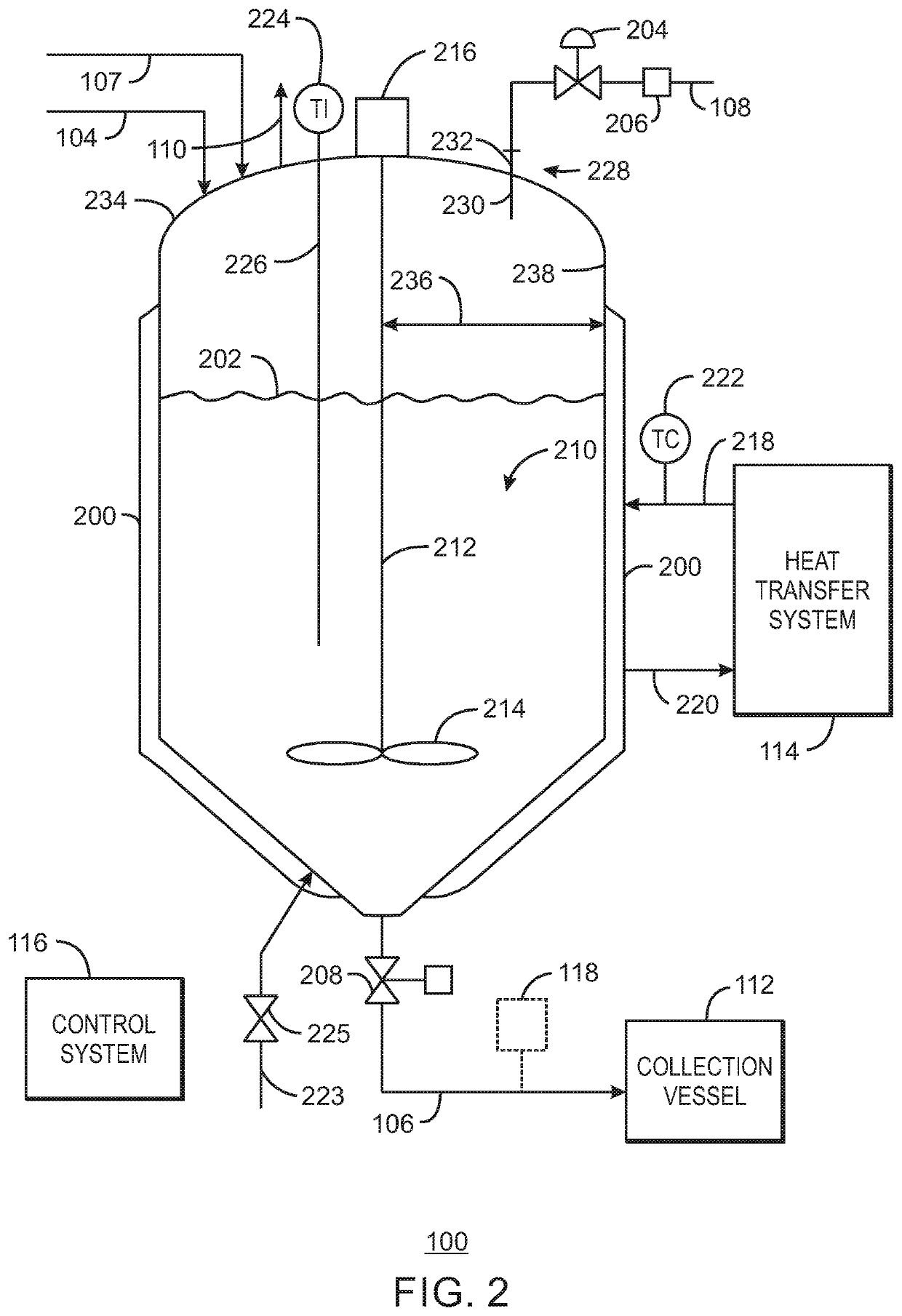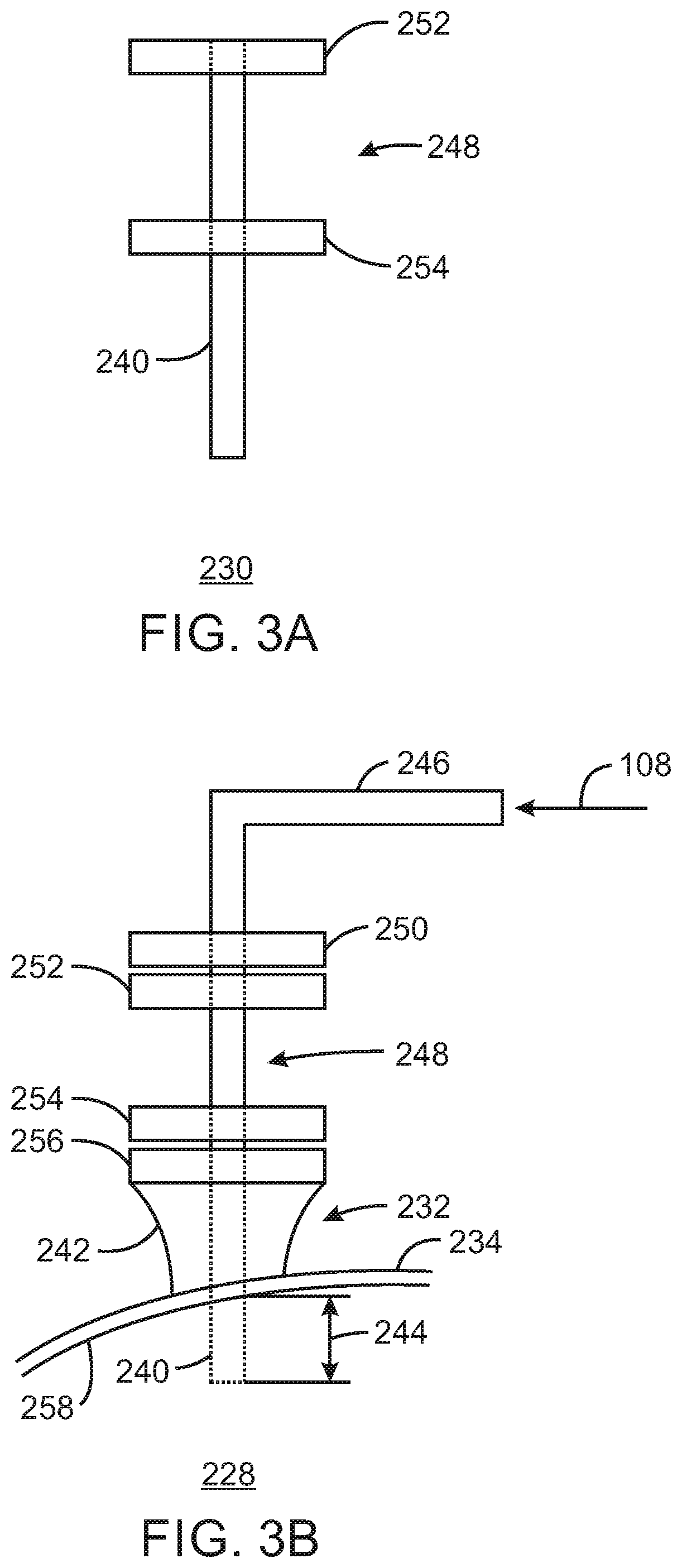Polyolefin production with chromium-based catalysts
a technology of chromium-based catalysts and polyolefins, which is applied in the direction of chemical/physical/physical-chemical stationary reactors, chemical apparatus and processes, chemical/physical processes, etc., can solve the problems of not having as high productivity or activity as chromium oxide-on-silica catalysts, and achieve the effect of reducing chromium-based catalysts, promoting the reaction of reducing agents, and reducing chromium-based catalysts
- Summary
- Abstract
- Description
- Claims
- Application Information
AI Technical Summary
Benefits of technology
Problems solved by technology
Method used
Image
Examples
examples 8 and 9
[0240]In Examples 8 and 9, DEAlE-reduced chromium oxide-based catalysts were reduced on a pilot plant scale using plant-activated C35300MSF support as described above. Catalyst preparation conditions used are indicated in Table 1 (agitation rate during DEAlE addition and reaction, wt % Al loading, DEAlE addition time, DEAlE feed arrangement, and drying line out temperature and time). Batch sizes were about 88% full where full refers to a batch size that just reaches the top of the agitator impeller blades. Examples 4 through 6 showed the improved flow index response possible by drying at lower line out temperature. In order to reach the same level of residual solvent in the final catalyst, extending the drying time is one option. In Examples 8 and 9, to determine any deleterious effects of increased drying time on catalyst performance, catalyst was dried differently than in other examples. Catalyst in Example 8 was dried for 16 total hours, but catalyst in Example 9 was dried for 19...
examples 10 through 14
[0241]In Examples 10 through 14, DEAlE-reduced chromium oxide-based catalysts were prepared on a plant scale using activated C35300MSF support as described above. Catalyst preparation conditions used are indicated in Table 1 (agitation rate during DEAlE addition and reaction, wt % Al loading, DEAlE addition time, DEAlE feed arrangement, and drying line out temperature and time). Batch size for Comparative Example 10 was about 100% full where full refers to a batch size that just reaches the top of the agitator impeller blades. Batch sizes for Examples 11 through 14 were about 95% full.
TABLE 1Catalyst Preparation Conditions for Examples 1-14 and Lab Slurry Polymerization Results for Examples 1-9DEAlE FeedArrangementInsert TubeDEAlELength BelowRadialDrying LineMeasuredCatalystScale ofAgitationAdditionUnderside ofLocationOutDrying LineFlow IndexActivitycatalystrateTimewt % AlTop HeadfromTemperatureOut TimeResponse(g PE / gExamplepreparation(rpm)(min)Loading(inches)Center(° C.)(hrs)(g / 10 ...
examples 15 through 19
[0242]In Examples 15 through 19, DEAlE-reduced chromium oxide-based catalysts were prepared on a pilot scale using activated C35300MSF support as described above and then tested for flow index response in a gas-phase fluidized bed polymerization reactor. Specifically, the catalysts prepared in Comparative Example 3 and in Examples 4 through 7 were utilized in these polymerization examples. Catalyst preparation conditions used are indicated in Tables 1 and 2 (agitation rate during DEAlE addition and reaction, wt % Al loading, DEAlE addition time, DEAlE feed arrangement, and drying line out temperature and time). Polymerization results are shown in Table 2 below and in FIG. 5 above.
[0243]The results show that at an agitation rate within a narrow range, and within a narrow range of wt % Al loading, and within a narrow range of DEAlE addition time, the measured flow index response increased when the DEAlE was fed with an insert tube to substantially prevent it from running down the unde...
PUM
| Property | Measurement | Unit |
|---|---|---|
| drying temperature | aaaaa | aaaaa |
| time | aaaaa | aaaaa |
| drying temperature | aaaaa | aaaaa |
Abstract
Description
Claims
Application Information
 Login to View More
Login to View More - R&D
- Intellectual Property
- Life Sciences
- Materials
- Tech Scout
- Unparalleled Data Quality
- Higher Quality Content
- 60% Fewer Hallucinations
Browse by: Latest US Patents, China's latest patents, Technical Efficacy Thesaurus, Application Domain, Technology Topic, Popular Technical Reports.
© 2025 PatSnap. All rights reserved.Legal|Privacy policy|Modern Slavery Act Transparency Statement|Sitemap|About US| Contact US: help@patsnap.com



